10 Great Creative Nonfiction Books
Tineke Bryson, Staff Writer
Last week Tineke addressed writing about our own life experiences, sharing 8 ways to do creative nonfiction well. But if you found yourself wondering what exactly creative nonfiction (CNF) is, and what sorts of books represent the genre, you are not unusual.
…
“Where is your creative nonfiction section?”
A film of panic clouds the eyes of the Half Price Books employee looking at me from across the trade-in counter.
“Memoirs, for example,” I offer.
“Do you mean biographies?”
“Sure,” I say. That’s not it at all, but I hope the biographies might be somewhere close to the CNF section—if it exists. When I eventually locate the small block of shelves allotted to CNF, I find them labeled as “Essays,” “Memoirs,” and “Letters.” Letters…charmingly old-fashioned. These are not letters as we think of them; they are not written to a person, but you could say they are written to humanity.
I get why CNF is not widely understood. But I am sad that so many people are never disabused of the grade-school notion that nonfiction is just history textbooks, science fact books, newspapers, and encyclopedias.
I want to challenge that idea.
Yet when I tell people that CNF is nonfiction that uses all the tools of fiction—extended metaphor, symbolism, plot structure, etc.—I always feel frustration. Because I know how easy it is to ask, “But don’t scholarly articles use metaphors?” or “Isn’t there a plot in a biography?”
Yes. And, yes.
Creative nonfiction as a genre label is easy to define but difficult to restrict. The definition in Wikipedia, for example, sounds simple enough:
Creative nonfiction (also known as literary nonfiction or narrative nonfiction) is a genre of writing that uses literary styles and techniques to create factually accurate narratives. Creative nonfiction contrasts with other nonfiction, such as technical writing or journalism, which is also rooted in accurate fact, but is not primarily written in service to its craft.
Yet when I try to put myself in the shoes of a journalist, I think I would take issue with defining journalism as rooted in fact but not written “in service to” craft. Great journalism can be creative, and is definitely a craft.
And then I wonder if it could be said that personal blog posts are all CNF. That doesn’t go down easily either. Blog posts are not technical writing or journalism, but so few blog posts are crafted. (Or is it just me?)
What I want to do is scream, “Just read some examples and you will see what I mean!”
So this post is a virtual scream. Not because I am angry; just because I would love to see more writers and readers give CNF a go, and I think reading classic examples is more helpful than a definition.
What follows is a list of 10 books I consider compelling examples of the power and range of CNF. I have only included books I have read, so it should go without saying—yet must be said—that this is not a list of the ten best CNF books. They are also not in a particular order.
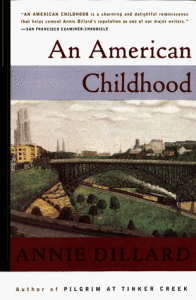 1. An American Childhood by Annie Dillard
1. An American Childhood by Annie Dillard
Annie Dillard is one of today’s most celebrated CNF writers. Her prose punches holes in other people’s prose. This book is an interesting example of a memoir written not about the author herself but as an exploration of a specific theme: what it feels like to be “alive.”
I defy anyone to read An American Childhood and not catch curiosity fever. Her powers of observation of the natural world are wonderful. She is esteemed both as a memoirist and as a riveting nature writer.
 2. The Genesee Diary by Henri Nouwen
2. The Genesee Diary by Henri Nouwen
Henri Nouwen, evangelicalism’s favorite Catholic (yes, I know about Tolkien), kept a journal during a six-month stay at a Trappist monastery in Western New York. The result is this quiet, but grounding spiritual travel log—Nouwen is physically restricted, but slowly journeying to a wide and open peace in his inner life.
It’s a strong example of editing and re-sequencing a private journal to present to others. It’s also interesting because it manages to avoid being a devotional book while exploring devotion.
 3. Dandelion Wine by Ray Bradbury
3. Dandelion Wine by Ray Bradbury
Like An American Childhood, this is a memoir, but Ray Bradbury has taken creative liberties in the telling that many memoirists would eschew.
A celebration of childhood, Dandelion Wine is delightful while also sometimes somber, and is a provocative read for writers trying to work out what the balance should be between fact and storytelling in their own nonfiction work.
I enjoy comparing and contrasting this book to Dillard’s.
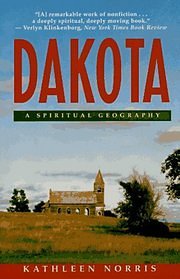 4. Dakota: A Spiritual Geography by Kathleen Norris
4. Dakota: A Spiritual Geography by Kathleen Norris
When poet Kathleen Norris moves from NYC to Lemmon, South Dakota, to take possession of an old family home, she finds herself confronted and changed by the landscape.
This book is a meditation on the power of landscape and climate to shape culture and the soul, and is also a tribute to place. It is by turns poetic and informative—a great example of writing about place without primarily writing about the self. The non-chronological structure of the book is also interesting.
 5. The Confessions of Saint Augustine by Augustine of Hippo
5. The Confessions of Saint Augustine by Augustine of Hippo
This is arguably the first creative nonfiction autobiography, although that is far from the way most people read it. It is also one of the most influential. In a single semester during college, I was expected to read this book for classes in writing, church history, and world literature.
Apart from saving me a lot of time, studying it in three contexts underlined for me how complex a work of CNF can be—a frank, crafted account of the self can be read on many levels and stand among the classics of literature.
 6. 1000 Gifts by Ann Voscamp
6. 1000 Gifts by Ann Voscamp
If there is a way for the publishing industry to market a book for women, they understandably will. But I can’t quite forgive them for doing this with the writing of Ann Voscamp. This fierce and stark exploration of the meaning of suffering and the power of gratitude is not just for ladies—despite what the girly cover would suggest.
I am so glad I got past the cover and gave this book a chance. Stunning prose. Heartfelt and moving wrestle with God. Just switch out the jacket!
 7. The Wild Places by Robert Macfarlane
7. The Wild Places by Robert Macfarlane
In an absorbing example of travel writing and nature writing, Macfarlane embarks on a quest to find and “map” the dwindling wild places of the British Isles; each chapter is dedicated to a different place. The prose is gorgeous but tempered. Macfarlane is good at knowing how and when to move between description, narrative, and thematic content, such as natural history, conservation, and stories of writers influenced by landscape.
To read a shorter specimen of his, I recommend The word-hoard: Robert Macfarlane on rewilding our language of landscape, (The Guardian).
 8. A Severe Mercy by Sheldon Vanauken
8. A Severe Mercy by Sheldon Vanauken
This book is shaped, as was the author, by the writings of Lewis, with whom Vanauken was friends. It is something of a combination of Lewis’s Surprised by Joy and A Grief Observed (also fine examples of CNF), in that it is a love story, a story of conversion to Christian faith, and a story of a great loss.
I find it more relatable than Lewis’s CNF, perhaps because Vanauken’s writing voice is not quite so gruff and he is less private.
 9. Wind, Sand, and Stars by Antoine de Saint-Exupéry
9. Wind, Sand, and Stars by Antoine de Saint-Exupéry
Today, Antoine de Saint-Exupéry is best known for the philosophical children’s classic The Little Prince. However, in literary circles, he is considered primarily a travel writer and is especially beloved for his stories and meditations on early aviation.
This book tells of his beginnings as a pilot, meditates on legendary pilot adventures, and also documents in whimsical but vivid terms his stint as a commercial pilot in the Sahara, including his survival of a crash landing in the desert. I find it especially compelling for its strange blend of colonial ethnocentrism and warm sympathy for individual Africans.
 10. Markings by Dag Hammarskjöld
10. Markings by Dag Hammarskjöld
Not unusually, the English title of this book does not quite capture the sense of the Swedish Vägmärken, which is more along the lines of “markers along the road.” It is the gathered diary entries of the second Secretary-General of the United Nations, who served from 1953 until his death in a plane crash in 1961.
He began writing entries at age 20. The book is interspersed with haiku-style poems, and covers many topics. The guiding idea of Markings is his search for meaning in everything he encountered and experienced.
…
What are some CNF books you like? I would love to read your recommendations in the comments!
…
Tineke Bryson works for One Year Adventure Novel as a kind of jane-of-all-trades, but her favorites trade of the lot is editing. Previous to OYAN, she graduated from Houghton College with an Honors in Writing and then worked as an editor for a large para-church organization.
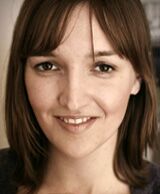

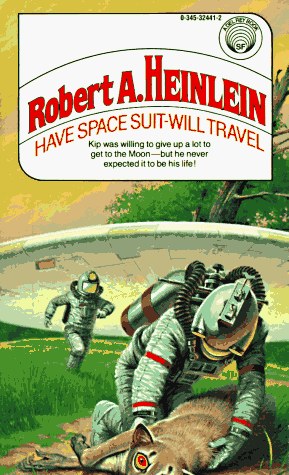
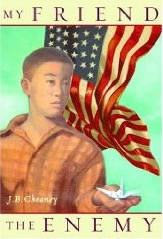
Kind of by accident, I stumbled into the travel writing section of the used bookstore several months ago and picked up /Notes from a Small Island/ by Bill Bryson, which I haven’t finished partly due to some crude language. But that got me interested in travel writing. I haven’t made much of it, being in college and all, but lots of these books look interesting.
Would you also consider nonfiction history books with conversational or narrative styles CNF? Your examples seem to be specifically rooted in one person’s experiences on some level. Books I’m thinking of in the history side are things like:
/Bomb: the Race to Build–and Steal–the World’s Most Dangerous Weapon/ by Steve Sheinkin – extremely based in fact but written in a very compelling way with a good plot shaped from historical events.
/The Killer Angels/ by Michael Shaara or even Jeff Shaara’s many books. These tend towards more historical fiction, I think. They follow historical fact but give dialogue and even thoughts to historical characters.
I just started reading a book called /Eleanor of Aquitaine and the Four Kings/ by Amy Kelly, which is giving historical fact but also painting a vivid picture of the times.
I re-read your definition part and I’m beginning to think that no, you wouldn’t include books like these. They seem a bit caught in-between genres, which is interesting. Being passionate about history and all, I’d love to see more of them. 🙂
I have the disadvantage of not being familiar with any of the books you mention, although I know some of Bill Bryson’s stuff is in the CNF category. There are many nonfiction books so well crafted, and that use elements of storytelling to great effect, that it is difficult to place them. If we see them on a continuum, we can manage; but if we try to put them in different boxes, we run into trouble. From your descriptions, I think the *The Killer Angels* sounds like it could be CNF…maybe. The others sound more like really well-written historical books. Historians are awesome because the field demands that they write history in a compelling way in addition to being accurate—something we can’t say of all fields of study. For example, Simon Schama’s history of Britain is very well-written. But not CNF.
What do you think of The Waterfront by Danny R. Martineau Jr.; I believe it is an example of a CNF novel.
I haven’t read it, but based on the author info on Amazon, it does sound like CNF. It’s just unusual that it is marketed as a novel. Lots of CNF reads like a novel, but it isn’t usual to call it that. Interesting!
Great post Tineke! I agree with R.G. that Bill Bryson is a good example of a creative non-fiction author. A Walk in the Woods is a solid instance that meets the definition. Also, the work of A.J. Jacobs is creative non-fiction — first-person acts of experimentation. If you are interested, I am the author of a new creative non-fiction book. The Things I Learned in College tells the amusing and true story of a year that I spent exploring the eight Ivy League schools. The book will be released next month, but I would be delighted to share an advance copy with you.
Thank you! Both for the recommendations and your very kind offer. Congrats! I would be honored to receive a free advance copy, but I do want to clarify that we don’t typically offer reviews on this blog. So I would happily look at it, and perhaps review it on Amazon or Goodreads, etc., but I would not be able to offer something like that on this blog here. If you would still like to send it, use the press address: Clear Water Press, ATTN: Tineke Bryson, PO Box 62, Olathe, KS 66051. All the best!
Hi, Tineke. I hope you received the copy of The Things I Learned in College. Amazon and Goodreads are ready for your review if you choose to post one. Thank you for your consideration!